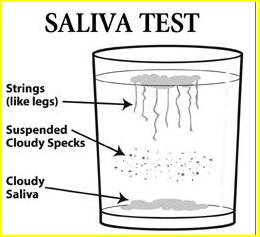Did you know that your gut is filled with a complex network of living microorganisms including bacteria and fungus? That’s right, as you’re reading this your gut is crawling with thousands of little critters, but while that might sound like the beginning of a horror film, it’s a good thing. As humans (and most mammals) evolved, we formed symbiotic relationships with gut bacteria that aided our digestion and enabled us to eat the wide and varying diets that we do. By the time you’re two years old, your gut is fully formed and seeded with good bacteria that ferment dietary fiber, support the immune system, inhibit the effect of pathogens on the body, synthesize vitamins, and metabolize most of what we eat. But what happens when the environment in our gut shifts and leads way to an overgrowth of bad bacteria?
The composition of gut bacteria or gut flora within our bodies is extremely complex and varies from person to person as well as positionally within the digestive tract. In fact, we know very little about the role each species of bacteria and fungus plays in the gut. For this reason, it’s very hard to paint a clear picture of what a good gut flora looks like compared to a bad gut flora. But there is one occupant of the gut that gets a lot of attention for its link to bad gut flora and that little guy is Candida albicans.
Candida is a genus of yeast and is most commonly experienced by most of us as a not so fun yeast infection. What you may not know is that Candida is always present in your digestive tract and actually plays a role in proper digestion and health. It isn’t until Candida overgrowth occurs within the gut flora and creates a pathway for other “bad” bacteria that we start to notice significant health issues. But what causes an overgrowth of Candida within the gut? One of the biggest culprits that seems to be getting more and more attention is a high sugar diet. Eating copious amounts of sugar has many downsides, and like we talked about in our blog post last week, the average human diet consists of about 32 teaspoons of sugar per day. Yeast like Candida feeds on sugar, so eating a diet that high in sugar for an extended period of time could potentially lead to an overgrowth. Antibiotics are also a big reason so many people suffer with Candida overgrowth. While antibiotics are a miracle drug and have saved most of us from some pretty nasty illnesses and infections, extended and constant antibiotic use can completely throw off the balance of your gut flora. Antibiotics don’t discriminate when it comes to killing off bacteria, so taking them can strip your gut of all its good bacteria and leave a path for pretty much anything to repopulate. When you combine this with a diet high in sugar, a life filled with stress, or a weakened immune system, you’re likely going to end up with Candida overgrowth.
So how do you know if you’re plagued by Candida overgrowth? This is where things get a little tricky. Even though Candida overgrowth plagues so many of us, testing for it is spotty at best. Because Candida is a naturally occurring yeast within the body, most doctor’s ignore it when it pops up on lab work. Stool samples and spit tests may not always come up as positive for Candida even when your body is crawling with it. Many practitioners recommend eight consecutive days of stool samples, but most of us can’t afford such expensive lab work. Many have turned to the at home spit test to see if they have Candida. All you do is spit in a glass of water first thing in the morning and watch what happens. If your spit sinks or grows legs, then you’re likely suffering from Candida overgrowth.

Of course, this test isn’t foolproof either. That’s when symptoms seem to be the best diagnosis. Below is just a few of the many symptoms one can experience with Candida overgrowth…
- Feeling tired, worn down or suffering from chronic fatigue
- Digestive issues such as bloating, constipation, diarrhea
- Difficulty focusing, brain fog, lack of memory
- Skin issues like psoriasis, acne, eczema, etc
- Depression, anxiety, mood swings, irritability
- Severa allergies and sinus issues
- Sugar cravings
The truth is that many of us feel some of these symptoms at any point in time, but the body isn’t meant to be running at 50%. We should be feeling energized, alert and happy with proper digestion and if you don’t feel that way, then Candida could be the issue. While antifungals can be prescribed to correct severe cases of Candida overgrowth, the easiest way to balance your gut is to cut sugar out of your diet entirely. This means no gluten, refined sugar, dairy, and even fruit. It may sound extreme, but cutting out sugar for even just a few days can starve the Candida in your gut and allow the good bacteria to come back again. In reality, there’s really no harm in cutting sugar intake for a bit and if it results in a happy gut flora and a healthier you, then maybe you’ll treat your gut with a little more kindness in the future. After all, Hippocrates himself said that “all disease starts in the gut”. Use your food as medicine and heal your gut and your health.

